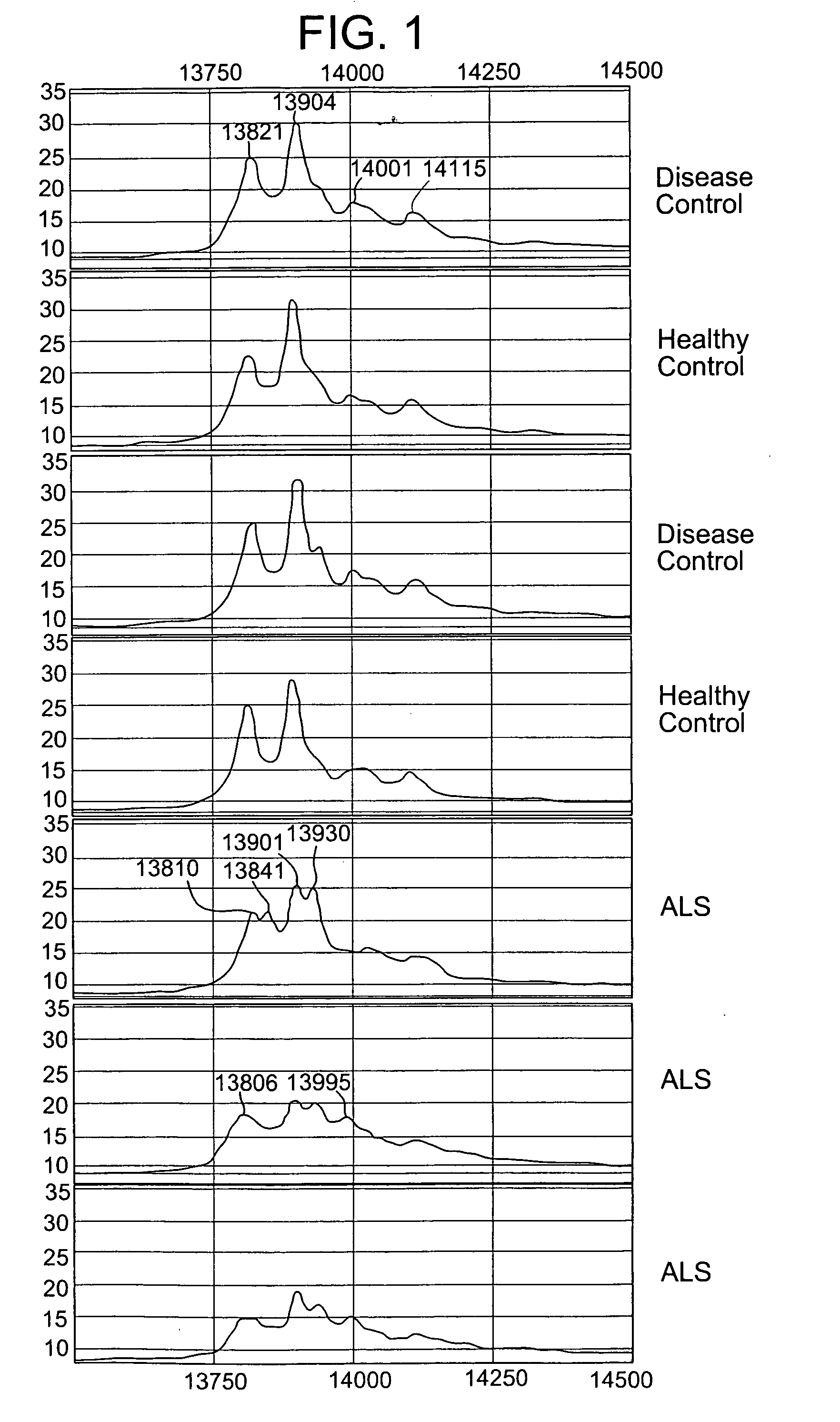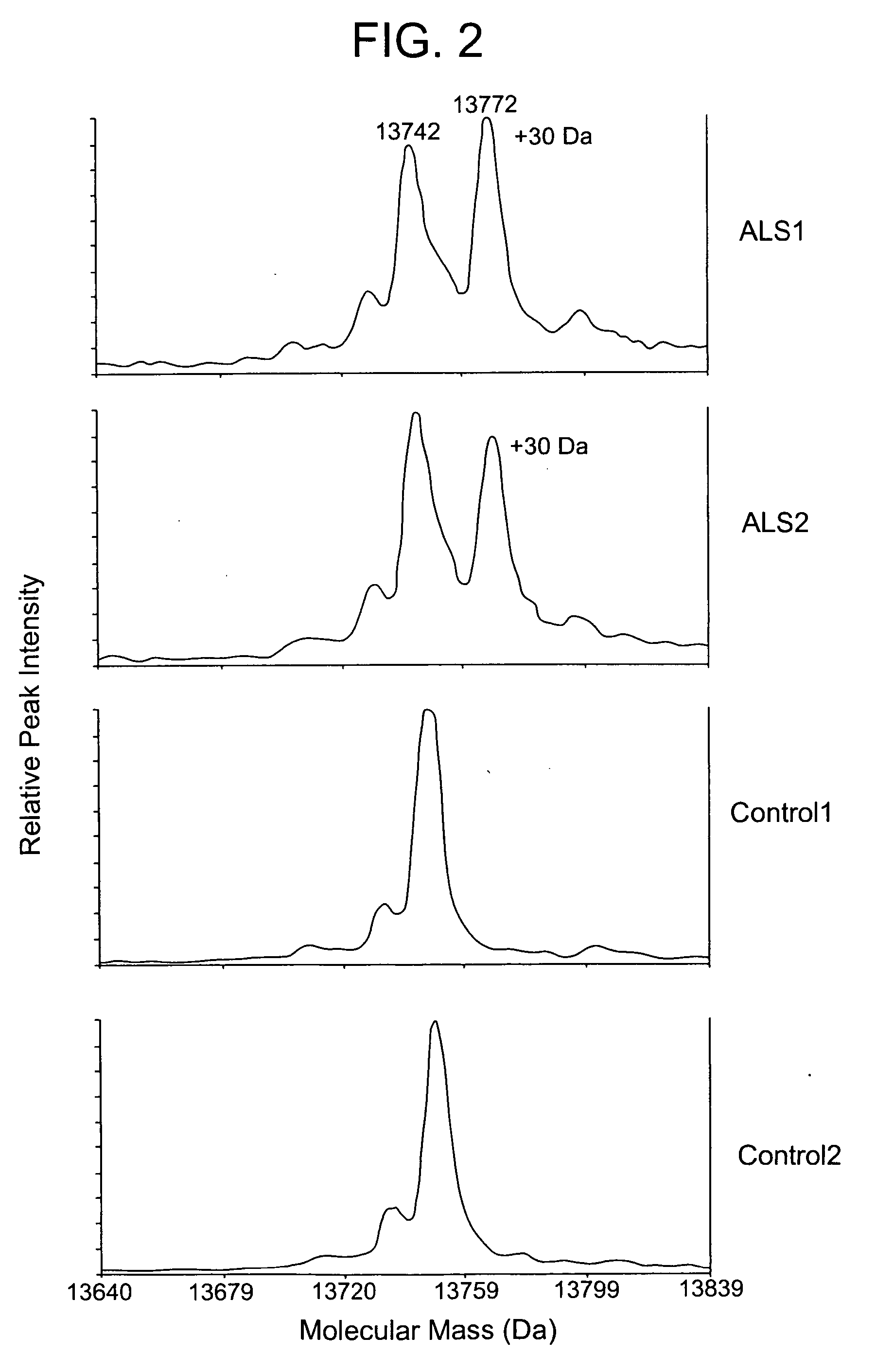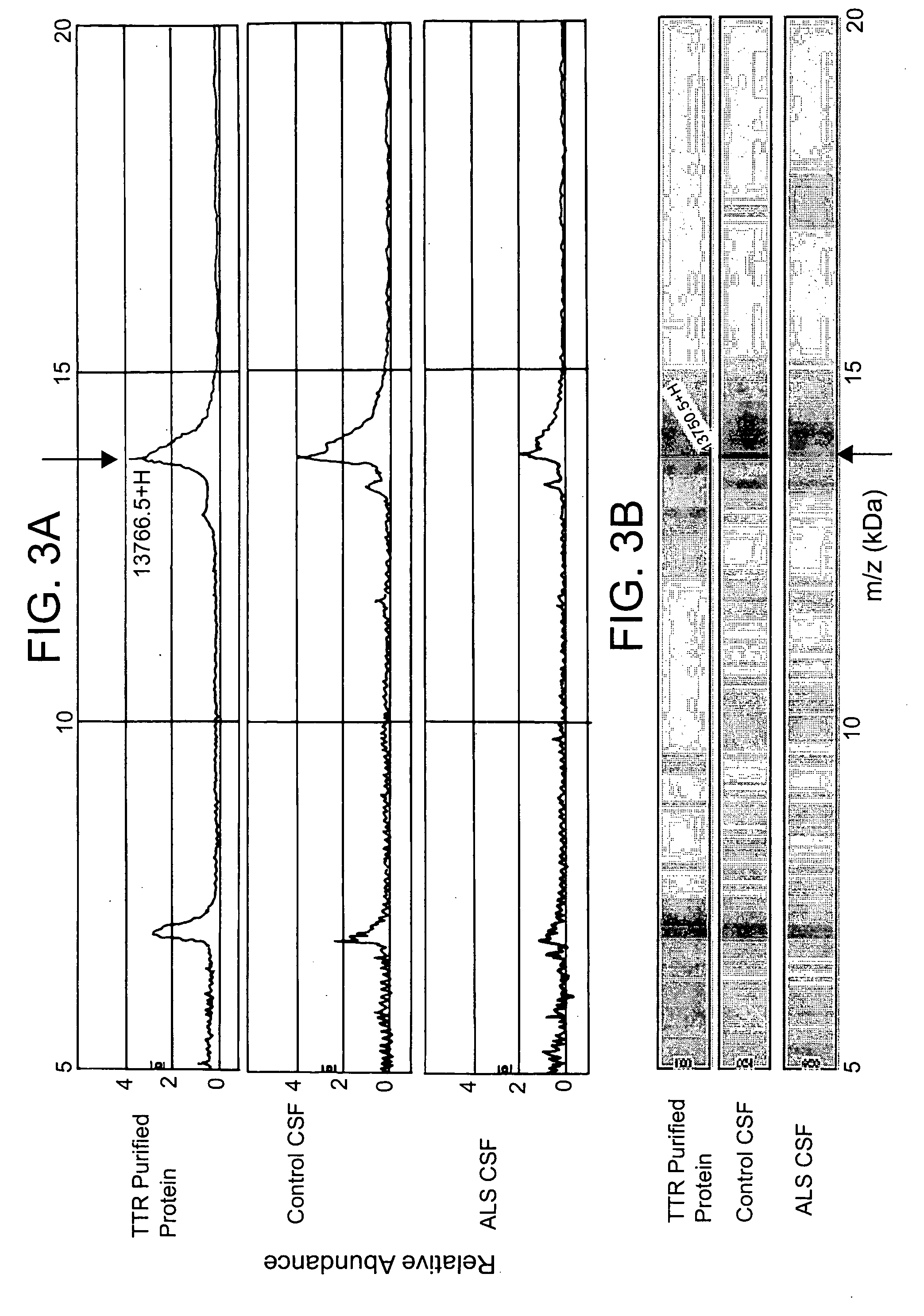Modulation of the neuroendoctrine system as a therapy for motor neuron disease
- Summary
- Abstract
- Description
- Claims
- Application Information
AI Technical Summary
Benefits of technology
Problems solved by technology
Method used
Image
Examples
example 1
[0066] This example demonstrates different TTR spectral patterns in ALS and control subjects.
[0067]FIG. 1 shows results obtained from the Ciphergen Protein chip reader. The CSF from 30 ALS and 15 healthy control or disease control (multiple sclerosis) subjects was analyzed for the presence or absence of TTR mass alterations. TTR was immunoprecipitated using an antibody specific to human transthyretin as described above. Proteins eluted from the anti-TTR coated beads was directly added to gold coated Protein Chips (Ciphergen) and read on the mass spectrometer. A series of 4-5 mass spectral peaks are typically observed for transthyretin. A characteristic TTR pattern is shown for both healthy and disease control subjects (top 4 panels). However, 30% of ALS subjects exhibited split mass spectral peaks for transthyretin (bottom 3 panels). This suggests either altered post-translational modifications to transthyretin or genetic polymorphisms of transthyretin causing altered amino acid co...
example 2
[0068] This example demonstrates mass spectral shifts of TTR in ALS patients using MALDI-TOF-MS.
[0069] TTR was immunoprecipitated from CSF samples from 30 ALS and 20 healthy or disease control subjects. This high resolution mass spectrometer was used to define any mass changes in TTR with higher resolution as compared to the Ciphergen mass spectrometer used in Example 1. To determine if mass spectral shifts may be due to genetic polymorphisms, transthyretin was immunoprecipitated from each CSF sample and then the reduced the transthyretin using tris(2-carboxyethyl)phosphine (TCEP) for 20 min. Reduction of TTR was necessary to resolve the protein mass peaks such that one can identify mass shifts induced by amino acid substitutions caused by genetic polymorphisms. The reduced TTR protein was then analyzed by mass spectrometry using an ABI Voyager / DE instrument. Within the control subjects, transthyretin is seen as a single major protein peak of 13742 Da. A small shoulder was also obs...
example 3
[0070] This example demonstrates increased levels of TTR in the CSF of ALS subjects.
[0071] Levels of transthyretin (TTR) in the CSF of control and ALS subjects were examined using sandwich ELISA. The results demonstrated an overall increase in the total level of TTR in the CSF of ALS patients relative to control subjects (FIG. 4). This is due to that fact that individual mass spectral TTR peaks exhibit alterations that result in decreased overall peak intensity values though the total level of TTR protein within the CSF has increased. This data is also contradictory to TTR western blot data using human spinal cord tissue (data not shown), further suggesting that TTR levels may decrease within the spinal cord and brain tissue while increasing within the CSF.
PUM
| Property | Measurement | Unit |
|---|---|---|
| Nucleic acid sequence | aaaaa | aaaaa |
| Level | aaaaa | aaaaa |
Abstract
Description
Claims
Application Information
 Login to View More
Login to View More - R&D
- Intellectual Property
- Life Sciences
- Materials
- Tech Scout
- Unparalleled Data Quality
- Higher Quality Content
- 60% Fewer Hallucinations
Browse by: Latest US Patents, China's latest patents, Technical Efficacy Thesaurus, Application Domain, Technology Topic, Popular Technical Reports.
© 2025 PatSnap. All rights reserved.Legal|Privacy policy|Modern Slavery Act Transparency Statement|Sitemap|About US| Contact US: help@patsnap.com



